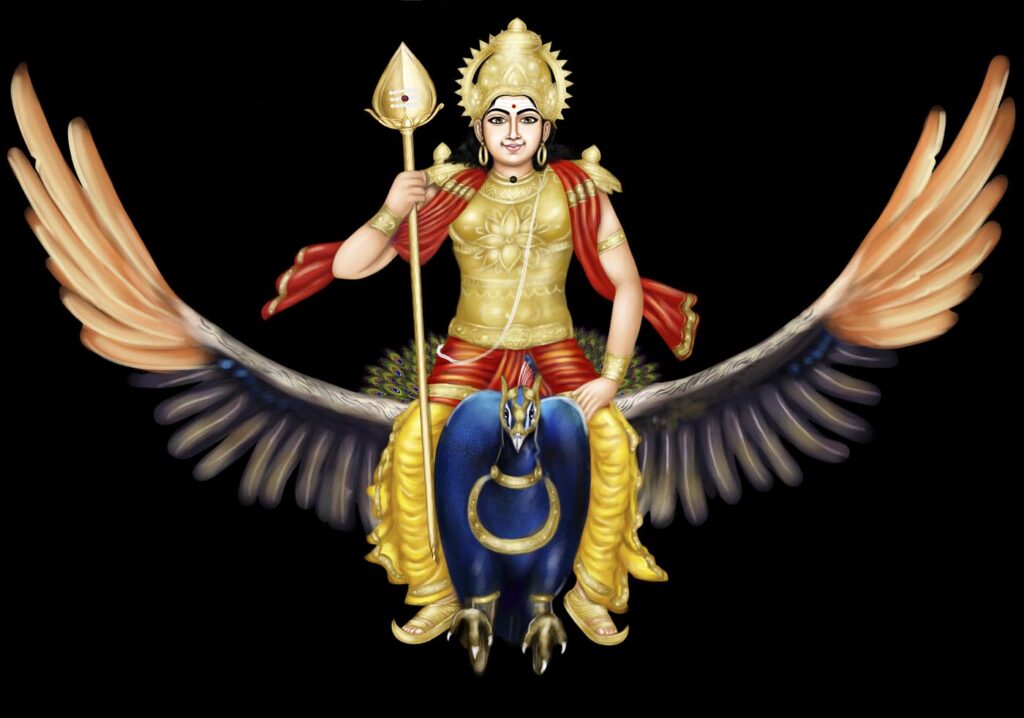Are the same divine beings part of more than one religion? Comparing Christian Archangel Michael and Hindu God Murugan
By Gayatri Rajan
I have long been fascinated by the enormous pantheon of celestial beings across all religions. I have wondered if they might in fact be the same beings under different names. Even casual research supports this possibility.
As one such example, the Judeo-Christian Archangel Michael bears an almost uncanny resemblance to the Hindu Mahadeva Murugan. To start with, the words archangel and mahadeva actually have the same meaning. The prefix arch-, from the Greek, means “chief or principal,” “highest in rank or authority or office,” “to govern, rule” or “individuals… directing or having authority over others of their class.” Maha-, from the Sanskrit, means great, mighty, strong, very important. Mahadeva means a great, important or mighty deva, or a great, mighty shining being. Eastern Orthodox Christians refer to Michael as the Taxiarch (“Commander”). The Catholic Church designates him a “saint,” even though most saints are humans who performed miracles during their lifetime, and not angelic beings.
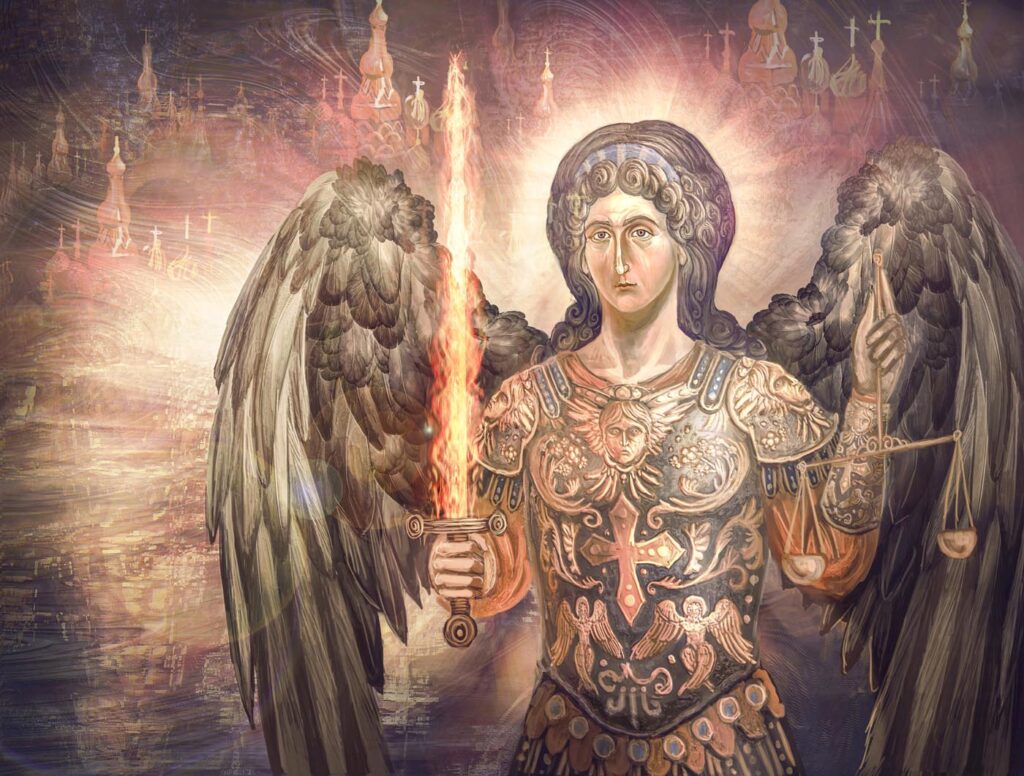
Both Michael and Murugan are thought of as spiritual warriors. In fact, there are identical situations in which they appear as such. The Book of Revelations, the final book of the New Testament, describes a battle in heaven at the beginning of time, in which Michael led his army of angels against Lucifer, whom he defeated and cast out of heaven. In the Hindu tradition, Lord Murugan led His army of devas to victory against the demon Surapadman and his army of savage asuras, demonic spirits, who had embarked on a wild frenzy of devastation, wreaking havoc on the universe and terrorizing the devas.
Many Hindus, myself included, believe these stories to be allegorical: the real battle is ongoing and takes place within each of us—not necessarily as dramatic as a cosmic war between good and evil, but a daily battle by striving souls to overcome the lower tendencies of anger, fear, laziness, etc., and to mobilize the willpower needed to progress on the spiritual path.
We find numerous other parallels in the details of these majestic beings. The color associated with each is red, and both are associated with fire— the kundalini fire in the case of Lord Murugan, and the flaming sword often pictured with Michael in Christian art. Both are often depicted with wings—in Murugan’s case, those of His peacock mount. Michael is typically depicted wearing medieval-style armor or chain mail, as in the modern painting above copied from 16th-century art. Murugan is likewise depicted with some kind of body armor.

They bear similar weapons: Michael the flaming sword, and Murugan a lance, called the Vel. It is understood by Hindus that the Vel is a weapon of grace, destroying ignorance and illusion, and its sharp point gives us discrimination—viveka. It will always be true of weapons and other implements in the hands of a Hindu Deity that they are figurative rather than literal, as all Deities are ultimately benign, even the ferocious-seeming Kali.
Both Michael and Murugan are fiery, forceful, exceedingly dynamic and charismatic. Both are resplendently beautiful; one of the names for Lord Murugan in the Tamil language of South India is Alahan, the beautiful. Beyond the Bible, legends about Michael abound. He is described in one text as “young, strong and handsome; huge and militant; eyes looking like pools of fire, with firm, chiseled facial features.” His skin is described as the “color of copper which radiates and glows from being in the Presence of God.” This is exactly the concept of Murugan: one of his names is “Ceyon,” meaning the “coppery red one.”
In addition to being a warrior, Murugan presides over the heads of nations and helps to guide them on a dharmic path; He is the God of religion; the Lord of yoga and renunciation, to whom serious aspirants on the spiritual path supplicate for success. Murugan’s vahana, his mount, is the peacock, symbolizing His conquest of vanity and pride. Murugan as Shanmuga, or Arumugam, has six faces, symbolizing His origin in the Pleaides, as well as the fact that He sees everything in all directions and has six main functions, or qualities.
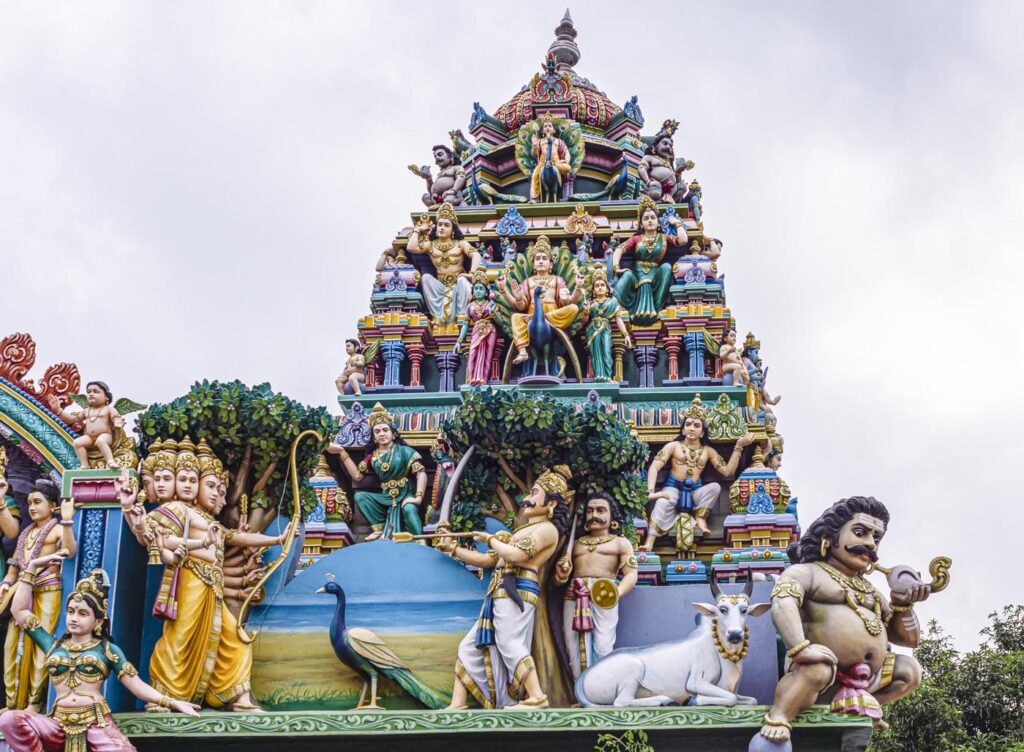
Archangel Michael is thought of as a healer by some. Lord Murugan is a healing Mahadeva as well. There is a temple in South India dedicated to Him as Lord Palani, the renunciate, to which many people go for healing. The icon there is made of nine special minerals, poisonous in their natural state, which become medicinal when water is poured over them, as during the ceremonies conducted there. This water is then distributed to the devotees and is considered an efficacious medicine.
Just as Michael is considered the guardian of the Jewish people, Lord Murugan is the overseer of the ancient Dravidian Tamil people of South India. He is known as the God of the Tamils and is said to have given them the beautiful Tamil language.
Michael is thought to be the angel of repentance, righteousness, mercy and sanctification. Although many Mahadevas in the Hindu pantheon could be considered to fulfill this function, in the Saivite denomination it is Lord Murugan to whom one turns in moments of contrition, confusion or darkness.
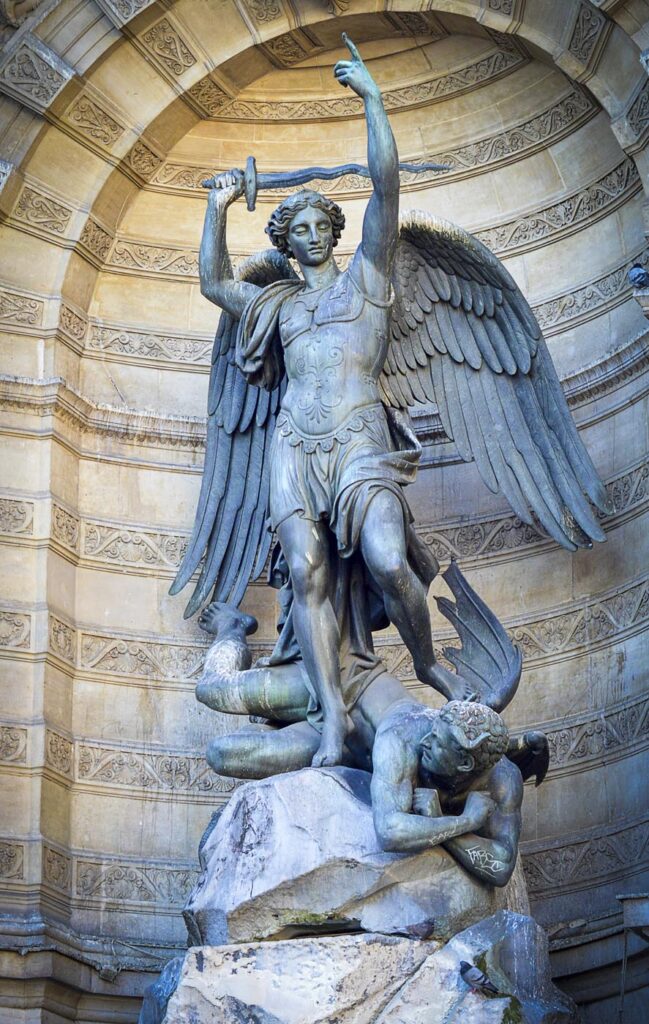
In one controversial concept of Archangel Michael, he is identical with Jesus–he is the son of God. Although considered as a serious heresy by most Christians, this view is held by Seventh-day Adventists and Jehovah’s Witnesses. Similarly, Hindus think of Lord Murugan as one of the two sons of Siva, the other son being Ganesha. In this case, the idea of sons of God is not literal, implying physicality, but a way of emphasizing the importance and preeminence of these two Mahadevas in the Saiva pantheon and understanding their proximity to the Supreme, having been created as Mahadevas rather than souls subject to reincarnation.
Another tradition with parallels to the worship of Murugan is the Yazidi, an Iranic pre-Zoroastrian religion. Their name for this Mahadeva is Melek Taus, the Peacock Angel, considered to be the leader of the archangels, an emanation of God Himself and the first and foremost of seven archangels created to administer the universe. Melek Taus is thus a tangible, denser form of the infinite Supreme God. In order to assist Melek Taus in this important role, the Supreme Creator also created six other Great Angels, who are, like the Peacock Angel, emanations of the Supreme God and not separate from Him. This idea of emanation is identical to Hindu thought.
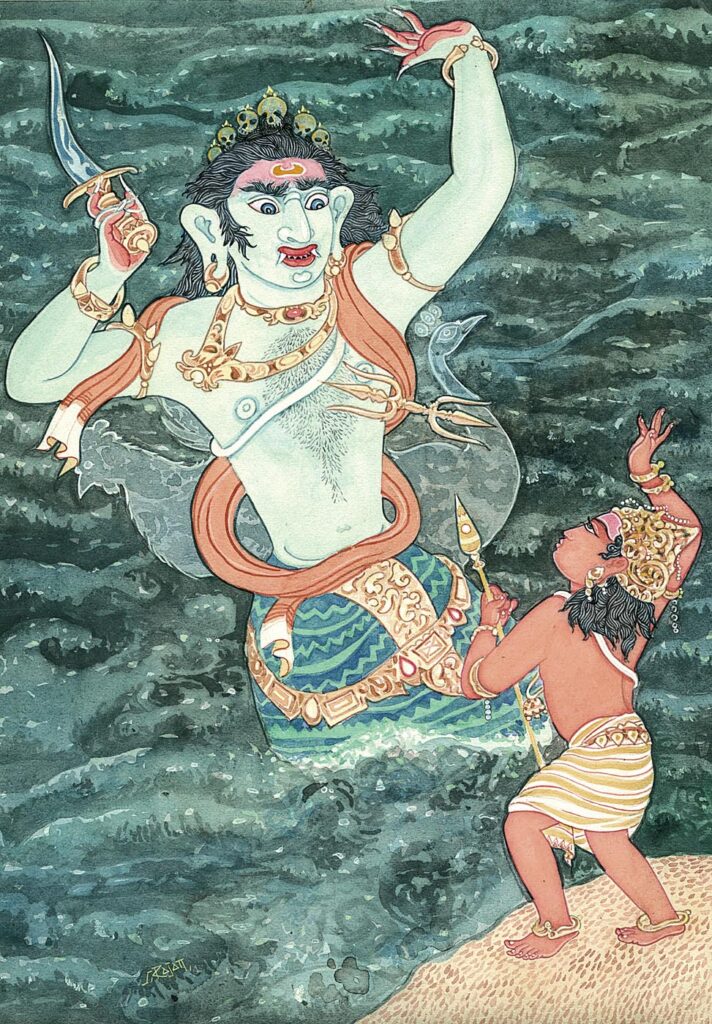
There are examples of divine beings in other religions which have close resemblances to some in the Hindu pantheon, leading one to consider if the division of religions we see in our world is of our own making and not the reality of the higher worlds.
(with editing input from Fred Stella)
About The Author
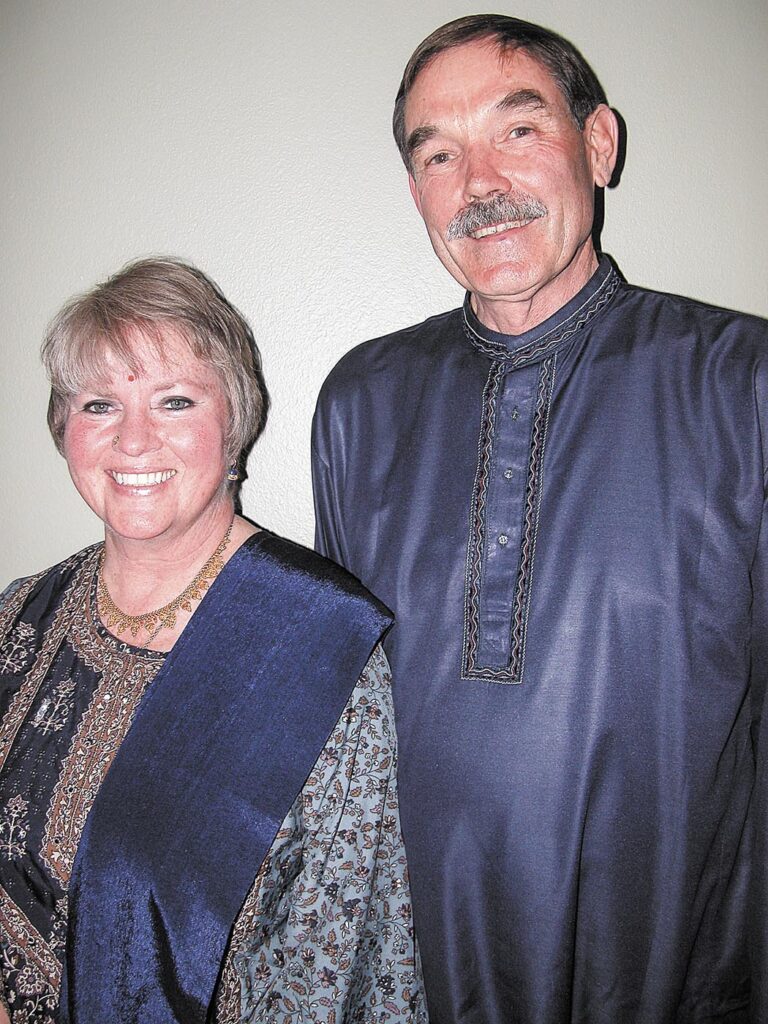
Gayatri Rajan (1947-2024) was a long-time devotee of Hinduism Today’s
founder, Satguru Sivaya Subramuniyaswami. She wrote this article shortly before she passed away after a long illness. Gayatri is survived by her husband Deva, (at right in photo) daughter Shivani and son Kailas.
